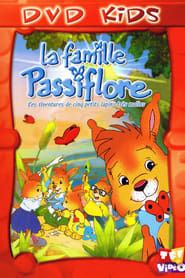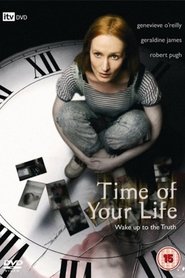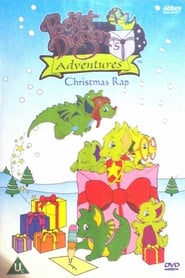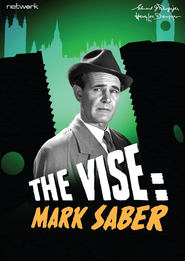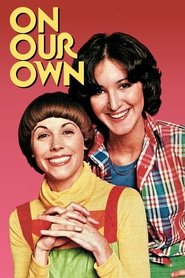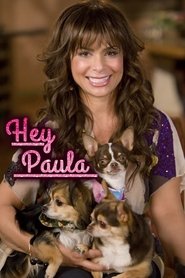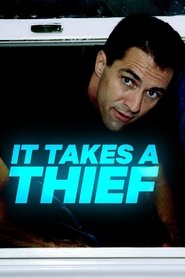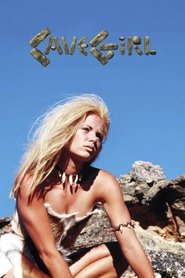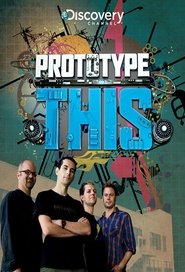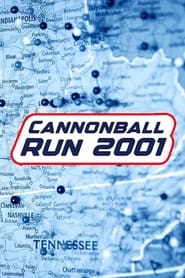Top Rated Reality TV Series on Amazon Video - Page 490
-
The Bellflower Bunnies
2001
star 8The Bellflower Bunnies is an animated series based on the Beechwood Bunny Tales book series by Geneviève Huriet. The show debuted on the TF1 network with four episodes airing between December 24 and December 28, 2001. It is a co-production between France's TF1 and several Canadian companies. The show centers on the adventures and exploits of the Bellflower family, a clan of seven rabbits who live in Beechwood Grove. The two adults in the family, Papa Bramble and Aunt Zinnia, take care of their five children: Periwinkle, Poppy, Mistletoe, Dandelion and Violette. -
Extraordinary People
2003
Extraordinary People
2003
star 6Extraordinary People is a television documentary series broadcast on Channel 5 in the United Kingdom. Each programme follows the lives of people with a rare medical condition or unusual ability. People featured have or had rare illnesses such as rabies and eye cancer. Many of these people do activities previously thought impossible for people in their condition. The show began airing on 28 March 2003. -
The Time of Your Life
2007
star 7Kate, a 37-year old woman wakes up after being in a coma for 18 years. Her boyfriend, Pete, from her younger days is with a new woman who bears an uncanny resemblance to Kate. Many of her friends have also moved on with their lives. But when she finds out that her comatose body was discovered near the lifeless body of a kid named Brian near a woodshed, her memories of that fateful night are triggered and the truth begins to surface. -
Black and Blue
1973
Black and Blue
1973
star 6Black and Blue was a BBC TV comedy-drama series, first broadcast in 1973. The show consisted of six 50–60 minutes episodes, each a separate self-contained playlet. The only connection was the Black and Blue humour theme. The first episode was broadcast on 14 August 1973, with the finale on 18 September 1973. The first, Secrets, was wiped, only surviving thanks to a domestic videotape copy made from the master by producer Mark Shivas. -
Pocket Dragon Adventures
1998
star 7Pocket Dragon Adventures was a short-lived 1996 syndicated cartoon series, based on the Pocket Dragon character created by artist Real Musgrave, best known from Pocket Dragons figurines also based on his work. The cartoon was about the Pocket Dragons who live with a kindly old wizard, and their many adventures. The series was produced by BKN Entertainment. The show was also produced by D'Ocon Productions and DIC Entertainment. The show first aired in the late-1990s/early-2000s in syndication in the US and about 50 other countries. The series is still playing in some countries, including just having been sold to Russian television in 2008. The show itself was created by Craig Miller and Marv Wolfman, who produced and story edited the series. Together or separately, they wrote over 40% of the total number of episodes. Pocket Dragon Adventures was also the very first animated series signed to a labor contract with the Writers Guild of America. -
Mark Saber
1954
Mark Saber
1954
star 7Mark Saber refers to a half-hour 1950s detective television series that took different forms and titles during its run. Tom Conway portrayed Mark Saber as a plainclothes English detective working with the Homicide Division of the N.Y.P.D. in Mystery Theater which aired on ABC from October 1951 to June 1954. Donald Gray portrayed Mark Saber as a one-armed private detective based in London. In The Vise which aired on ABC from September 1955 to June 1957. Donald Gray also portrayed Mark Saber in Saber of London which aired on NBC from October 1957 to May 1960. -
On Our Own
1977
On Our Own
1977
star 5On Our Own is a short-lived American sitcom broadcast on CBS from October 1977 to April 1978, lasting for one season and 22 episodes. Maria Bonino and Julia Peters are two secretaries in a high-powered New York advertising agency. They are promoted to art director and copywriter and begin their new careers with enthusiasm. Other people in the agency include J.M. Bedford, chairman of the board; Toni McBain, the President; April Baxter, a copywriter; Eddie Barnes, a TV commercial producer, and Craig Boatwright, a salesman. -
Newport Harbor: The Real Orange County
2007
star 5Newport Harbor: The Real Orange County, often referred to simply as Newport Harbor, is an MTV reality television series, documenting the lives of several teenagers living in Newport Harbor, an affluent seaside community located in Orange County, California, United States. It differs from the usual reality show in that it is structured as a traditional narrative than a straightforward observant documentary style. The series premiered on August 13, 2007 and concluded on January 2, 2008. The series was created as a successor to Laguna Beach: The Real Orange County to avoid cancelling the series for lack of a fourth season plotline. However, Newport Harbor proved to be unsuccessful and was cancelled after two seasons. -
Hey Paula
2007
Hey Paula
2007
star 4Hey Paula is an American reality series starring and co-produced by American television personality Paula Abdul that premiered on June 28, 2007 on the Bravo network. The series is also broadcast in Britain on the ITV2 channel and Arena 105 in Australia. -
Welcome to the Parker
2007
star 2Welcome to the Parker is an American reality television series on Bravo that premiered on July 26, 2007. -
Wonderama
0000
Wonderama
0000
star 8Wonderama is a long-running children's television program that appeared on the Metromedia-owned stations from 1955 to 1986, with WNEW-TV in New York City as its originating station. Wonderama also ran in five other markets in which Metromedia owned television stations: WTTG in Washington D.C., KMBC-TV in Kansas City, KTTV in Los Angeles, WXIX-TV in Cincinnati, and WTCN-TV in Minneapolis – Saint Paul. The show ran three hours, and later two hours, on Sunday mornings. In the 1960s, Wonderama aired in a one-hour weekday version in addition to the three-hour Sunday show. The one-hour program lasted until 1970. In 1977, the show scaled back to two hours before WNEW canceled it in December of that year. The last produced show was taped December 21 before airing on December 25. Host Bob McAllister was upset when an advertisement for the 1972 Charles Bronson movie The Mechanic aired during the show. McAllister bought an ad in The New York Times that told viewers to stop watching Wonderama. In a 1990s interview wit -
Home Run Derby
1960
Home Run Derby
1960
star 10Baseball's greatest hitters slug it out in a champ-against-champ duel on a match play basis. -
The Week the Women Went
2008
star 5The Week The Women Went is a television show produced by Paperny Films, and based on a BBC Three program of the same title. The show was part documentary, part reality television, that explores what happens when all the women in an ordinary Canadian town disappear for a week and leave the men and children to cope on their own. The first season of the show was taped in Hardisty, Alberta from June 2 to June 9, 2007 and consisted of eight one-hour episodes. The show first aired on CBC Television in Canada on January 21, 2008 and concluded on March 10, 2008. An estimated 1.2 million viewers watched the debut episode. The second season of the show was shot in Tatamagouche, Nova Scotia from September 8 to September 15, 2008 and began airing on January 21, 2009. -
Make Room for Granddaddy
1970
star 5Make Room for Granddaddy is a sequel to the American TV series The Danny Thomas Show (also known as Make Room for Daddy). The series aired for one season on ABC between September 1970 and March 1971. -
Masterminds
2003
Masterminds
2003
star 10Masterminds was a true crime documentary television series produced in Canada with truTV. As of February 2011, the program is broadcast on History Television and Global TV in Canada and truTV in the United States. Each 30 minute episode features one true crime story. The profiled crimes generally involve large sums of cash or merchandise and, more important, extremely unique and/or elaborate methods of criminal operation which were never before seen by law enforcement agencies. With a few notable exceptions, most criminals profiled in this series were caught within a couple of years of committing their crime. -
It Takes a Thief
2005
It Takes a Thief
2005
star 7A unique series offering viewers something they've never seen before: an actual home burglary, live, as it happens. Hosted by two reformed ex-cons, It Takes a Thief exposes the security flaws of a home by unleashing two uniquely qualified experts - ex-burglars - who will provide vital insights into the workings of the criminal mind. -
Cavegirl
2002
Cavegirl
2002
star 1Cavegirl is a British TV series directed by Daniel Peacock. It starred Stacey Cadman, Stephen Marcus, Jennifer Guy, Harry Capehorn and Lucinda Rhodes-Flaherty. It followed the adventures of a teenage cavegirl. Although based in the time of cave people there are many references to modern pop culture and in a similar vein to The Flintstones there are many ancient versions of modern inventions featured. -
Telescope
1963
Telescope
1963
star 6Telescope is a Canadian documentary series which aired on CBC Television between 1963 and 1973. The series was hosted by Fletcher Markle, which profiled notable Canadian people from celebrities to the unknown, who made a difference. Starting in September 1966, Telescope was the first regular colour broadcast in Canada. It's producer was Sam Levene. In 2008, CBC offered 10 episodes of Telescope on their Digital Archives website. The episodes are from the 1970-1971 season, and feature new host Ken Kavanagh. Among those profiled were game show host Monty Hall, publisher Mel Hurtig, journalist Pat Carney, actor John Vernon, author Farley Mowat, amusement park impresario Patty Conklin, and underwater explorer Joe MacInnis. A 1970 episode featured actor Donald Sutherland including early footage of his son Kiefer. Mentalist Uri Geller followed a week later by Ray Hyman and Jerry Andrus who explained and duplicated Geller's "paranormal" feats. -
Prototype This!
2008
Prototype This!
2008
star 5Look into the viability of gadgets and technology seen in science-fiction movies. In a warehouse on an island in San Francisco Bay, a team of engineers and PhD's are inventing the future one prototype at a time. -
Cannonball Run 2001
2001
Cannonball Run 2001
2001
star 4Cannonball Run 2001 was a reality television series broadcast on the USA Network in 2001. It was inspired by the Cannonball Baker Sea-To-Shining-Sea Memorial Trophy Dash, an outlaw road race of the 1970s which was the source for the famous Cannonball Run movies. The show featured a series of five location-specific challenges along a New York-to-Los Angeles course, as in the original race. Development of the series started without the participation of Brock Yates, organizer of the original Cannonball and holder of the trademark; indeed, the production company paid Yates for the use of the name just before the show debuted. Yates was not pleased with the series, as he felt it was fake and staged. In 2005, Yates teamed up with a Cannonball driver and film producer J Sanchez to produce a more authentic reality series called Cannonball: This Is Reality to run alongside the actual One Lap of America race. The project was shelved in 2006 due to lack of interest from networks.
 Netflix
Netflix
 Amazon Prime Video
Amazon Prime Video
 Apple iTunes
Apple iTunes
 Apple TV Plus
Apple TV Plus
 Disney Plus
Disney Plus
 Google Play Movies
Google Play Movies
 Paramount Plus
Paramount Plus
 Hulu
Hulu
 HBO Max
HBO Max
 YouTube
YouTube
 fuboTV
fuboTV
 Peacock
Peacock
 Peacock Premium
Peacock Premium
 Amazon Video
Amazon Video
 The Roku Channel
The Roku Channel
 AMC+
AMC+
 Kocowa
Kocowa
 Hoopla
Hoopla
 The CW
The CW
 Vudu
Vudu
 Starz
Starz
 Showtime
Showtime
 PBS
PBS
 Pantaflix
Pantaflix
 FXNow
FXNow
 Tubi TV
Tubi TV
 Kanopy
Kanopy
 Comedy Central
Comedy Central
 Crunchyroll
Crunchyroll
 Microsoft Store
Microsoft Store
 Redbox
Redbox
 Sun Nxt
Sun Nxt
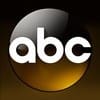 ABC
ABC
 DIRECTV
DIRECTV
 Crackle
Crackle
 Fandor
Fandor
 Plex
Plex
